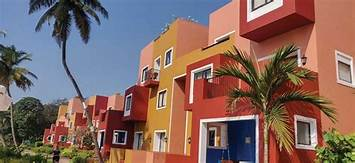Postmodern Design in India
The postmodern design trend spanned two decades, beginning with architecture in the 1960s and peaked between 1970 and 1990. It was strong defiance of modern design's austere ideas. Postmodern design involves a lively, creative, and extravagant style that embraces unorthodox ideas.
Hippie culture set the way for a new period of creative expression in art, music, fashion, and design in the 1960s. Flower power and free-flowing hair were followed by expressive architecture with a spin on forms and symbols, which later influenced interior design.
According to Glenn Adamson, director of the "Postmodernism: Style and Subversion 1970-1990" exhibition at London's Victoria & Albert Museum, the two most important factors propelling the Postmodern movement were American architecture and Italian radical design.
In the bold notions of postmodern design, the form did not follow function.
It was a stark contrast to modern design's muted, minimalist ideas.
History Of Postmodern Design
Postmodernism began as an attempt to break out from modern design's functional, muted, and often impersonal style. Postmodernism, on the other hand, embraces the unusual, the flashy, and the strange.
The postmodern style paralleled the evolving social outlooks of the time, as it was fueled by the belief that design doesn't have to obey laws. The definitions of an item's function became more fluid as mismatched pieces came together to produce playful lavish designs.
With a return to hand-made objects, vivid patterns, and out-of-the-box approaches to décor, postmodern design is seeing a revival today.
Postmodernism Design
Le Meridien, New Delhi
Air-conditioned rooms have wooden floors and furniture, as well as a flat-screen TV with satellite channels, a minibar, and an electric kettle. There is a shower and a hairdryer in the private bathroom.
A car rental service, a travel desk, and a 24-hour front desk are available for your convenience. It also has a meditation space and separate treatment apartments for couples. A steam room, hot tub, and fitness center are among the other amenities.
Parliament Library, New Delhi
The Parliament Library, symbolically a house of knowledge, is located next to the Parliament House in Lutyens Delhi. The current Parliament's center hall, which is linked to the new complex's central core, symbolizes authority, unanimity, and democracy both visually and symbolically. A formal structure is envisioned for the library in the Indian tradition, created in a contemporary idiom to capture the essence without emulating previous historical forms. The land is 10 acres in size, with a 50,000 square meter built-up area. The current Parliament's design adheres to the "Beaux-Arts" planning standards for the central line axis. It has a circular plan with three axes that meet in the center to form a dome. In light of Delhi's severe environment, courtyards are an important part of the design lexicon. They assist in the reduction of summer heat and the creation of a dust-free environment. The building's height is capped at the Parliament House's podium level.










Comments
Post a Comment